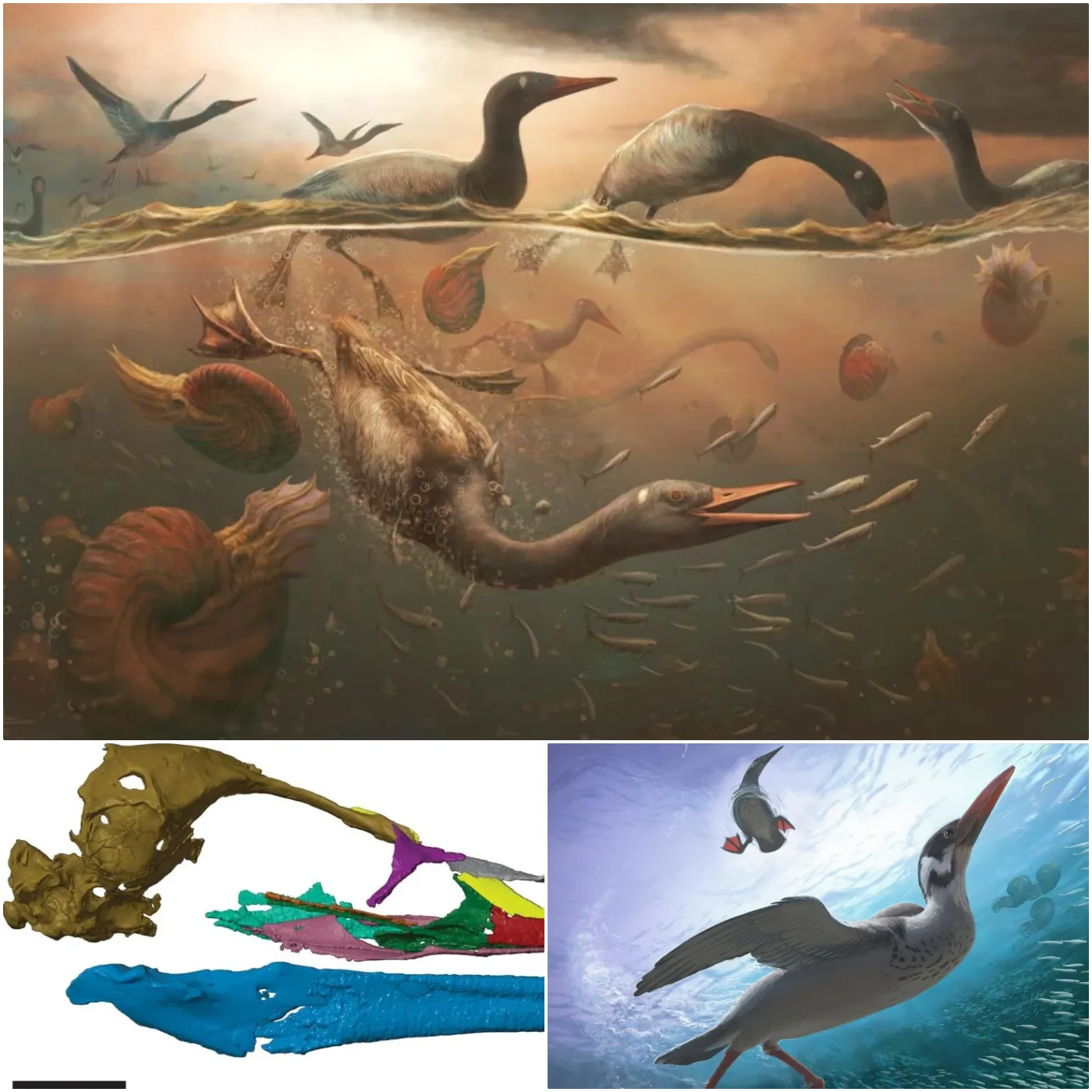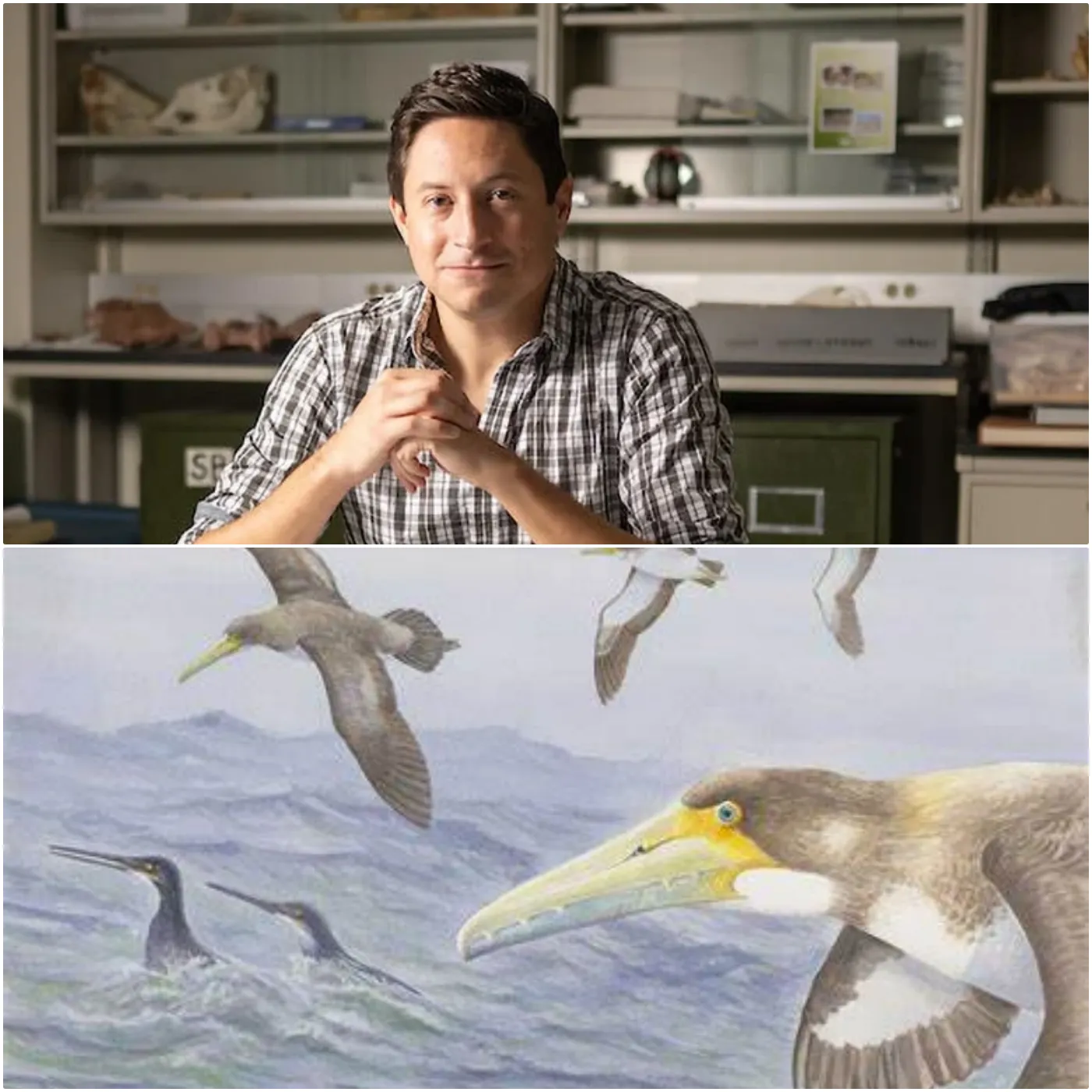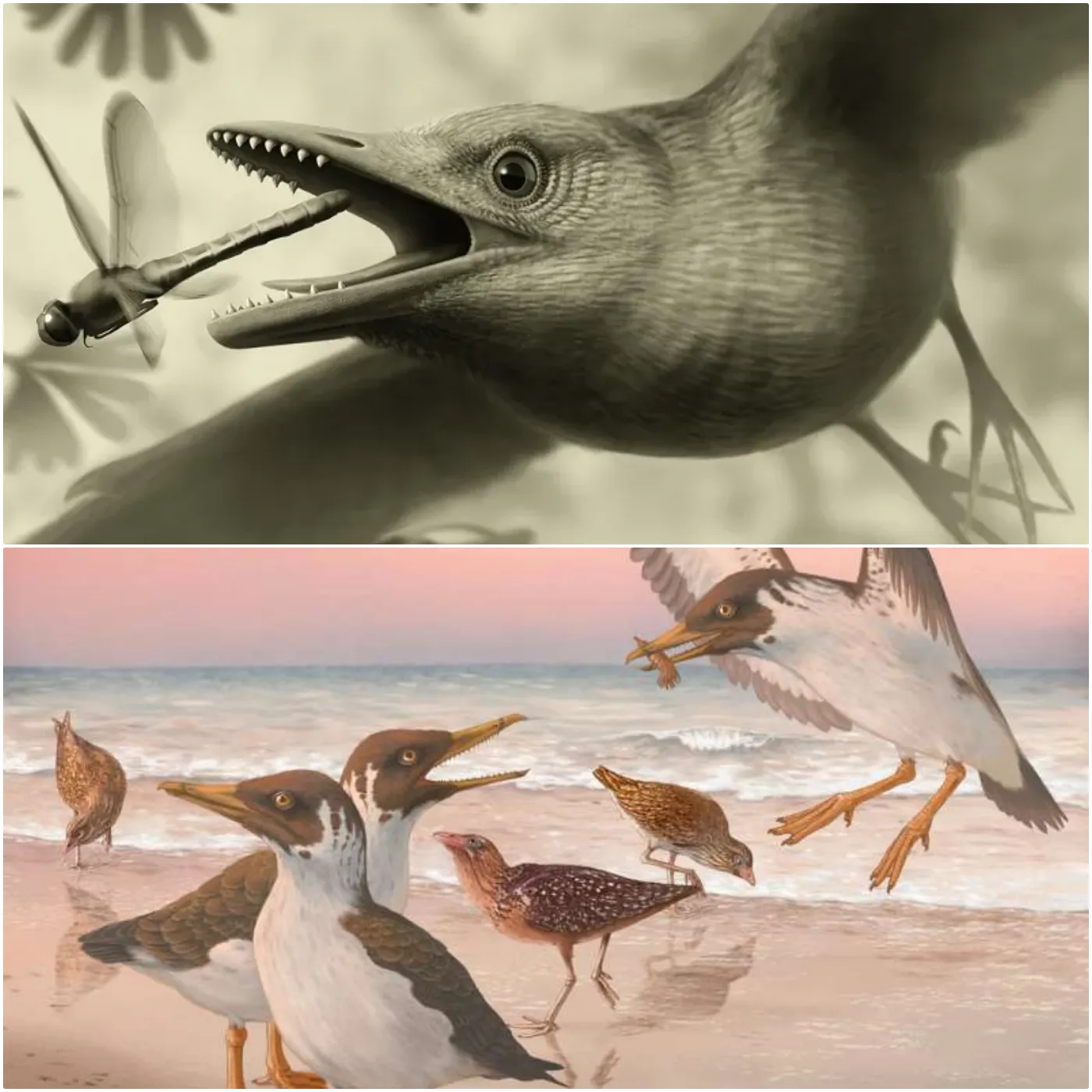

New Clues Unravel the Mystery: Do Ducks Always Look and Sound Like Ducks?
New Clues Unravel the Mystery: Do Ducks Always Look and Sound Like Ducks?
66 million years ago, at the end of the Cretaceous Period, a massive asteroid impact near the Yucatán Peninsula in Mexico triggered the mass extinction of all known non-avian dinosaurs. However, for the ancestors of today’s waterfowl, surviving this cataclysmic event may have been easier than we once thought—just like… water off a duck’s back.

Antarctica – A Safe Haven for Duck Ancestors?
Geographic location played a crucial role in survival, and there is evidence that Antarctica may have served as a refuge for the early ancestors of modern waterfowl. While it is now covered in icy desolation, Antarctica once had a mild climate, with lush vegetation, making it a suitable environment for the first modern birds to thrive.
Recently, a remarkable fossil was published in Nature, providing valuable evidence of the oldest-known modern bird. This fossil belonged to an early relative of ducks and geese, which lived in Antarctica at the same time that Tyrannosaurus rex ruled North America.
Vegavis iaai – An Ancient Bird Related to Ducks and Geese?
This groundbreaking fossil is an almost complete skull, dating back 69 million years, and belongs to the extinct bird species Vegavis iaai. The specimen was discovered on Vega Island, part of the Antarctic Peninsula, during a 2011 expedition by the Antarctic Peninsula Paleontology Project.
When CT scans of the skull were performed, scientists identified several striking features:
- A long, pointed beak
- A uniquely shaped brain unlike any previously discovered birds from the Mesozoic Era
- Powerful jaw muscles, suggesting the bird was capable of overcoming water resistance while diving for fish
These traits place Vegavis among modern birds, offering the earliest evidence of their expansion and evolution across the planet.
A Controversial Bird in Evolutionary History
According to Dr. Christopher Torres, lead researcher and professor at the University of the Pacific, Vegavis iaai is a species that has sparked intense debate among paleontologists.
“Very few birds have been as controversial as Vegavis. But this new fossil may help resolve many of those debates. Most importantly, it clarifies where Vegavis fits on the bird evolutionary tree.”
When Vegavis was first discovered 20 years ago, it was proposed to be one of the earliest members of modern birds (also known as crown-group birds), closely related to ducks and geese. However, because modern birds were believed to be extremely rare before the mass extinction at the end of the Cretaceous, later studies cast doubt on Vegavis’ evolutionary placement.
What makes this new fossil unique is that it contains an almost complete skull—something no previous specimens of Vegavis had. This crucial discovery has allowed scientists to confirm its place within modern waterfowl.
Vegavis – A Diving Bird That Hunted for Prey?
Unlike most modern ducks, the skull of Vegavis suggests that it had powerful jaw muscles, an adaptation for overcoming water resistance while hunting fish.
Additionally, clues from other parts of its skeleton indicate that Vegavis used its feet to propel itself underwater, much like today’s loons and diving ducks. This suggests that Vegavis had a unique feeding strategy, combining traits of both modern waterfowl and ancient diving birds.
The Role of Antarctica in Early Bird Evolution
Dr. Patrick O’Connor, co-author of the study and professor at Ohio University, emphasized:
“This fossil highlights how Antarctica may have played a crucial role in the early evolution of modern birds.”
While other bird fossils from the late Cretaceous found around the world are often difficult to classify, the fossils from Antarctica provide clear evidence of key evolutionary changes, helping scientists understand how birds survived the mass extinction event that wiped out the dinosaurs.
Dr. Matthew Lamanna from the Carnegie Museum of Natural History noted:
“In many ways, Antarctica is the final frontier for understanding life during the Age of Dinosaurs.”
Did Antarctica Shape the Future of Modern Ecosystems?
Scientists believe that Antarctica’s role extends beyond bird evolution and may have helped shape modern ecosystems.
Most fossil sites from the late Cretaceous, such as Madagascar and Argentina, reveal a bizarre collection of ancient birds with teeth and long bony tails, only distantly related to modern species. However, Vegavis already displayed features resembling modern ducks, suggesting that Antarctica may have been a breeding ground for the earliest modern birds.

Research on Vegavis and the Evolution of Birds
Dr. Christopher Torres conducted this research with support from the National Science Foundation (NSF) Postdoctoral Fellowship Program at Ohio University. His work focuses on understanding how birds diversified and adapted to survive extinction events.
According to Ohio University President Lori Stewart Gonzalez, this discovery not only advances our understanding of bird evolution, but also represents a major achievement in scientific research.
“This discovery illustrates the power of scientific exploration and the crucial role of our institution in expanding knowledge about Earth’s deep history,” Gonzalez stated.
“These studies highlight the invaluable contributions of graduate students and postdoctoral researchers who are at the forefront of these expeditions. It is through these global scientific explorations—whether in the field or the lab—that we can truly grasp the dynamic changes our planet has undergone over millions of years. This research is a prime example of experiential learning that connects STEM education with hands-on, transformative research, preparing the next generation of scientists to tackle future challenges.”
Dr. O’Connor added:
“Large-scale projects like this, involving students and postdoctoral researchers, are essential for preparing future scientists to collaborate, push the boundaries of science, and address the biggest questions facing our planet.”
Final Thoughts
The discovery of Vegavis iaai has opened a new chapter in understanding the origins of modern birds. Fossil evidence not only sheds light on the evolution of ducks and geese, but also highlights Antarctica’s pivotal role in shaping today’s ecosystems.
So, did ducks always look like ducks and sound like ducks millions of years ago? The answer may be far more complex than we ever imagined!


















